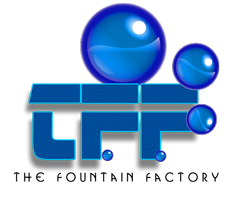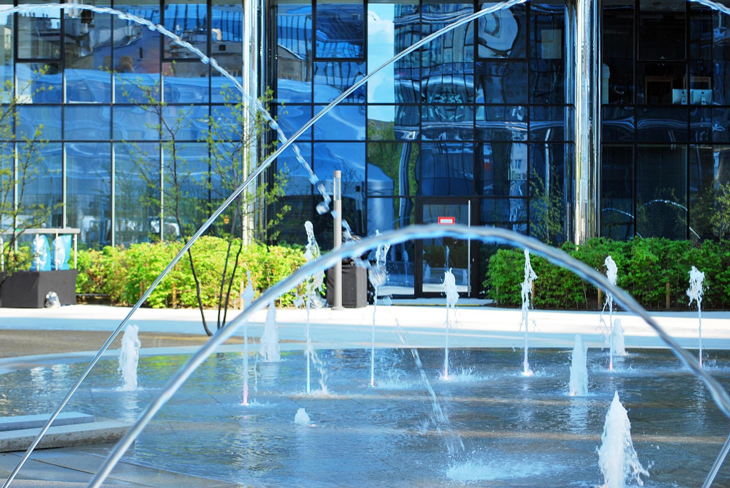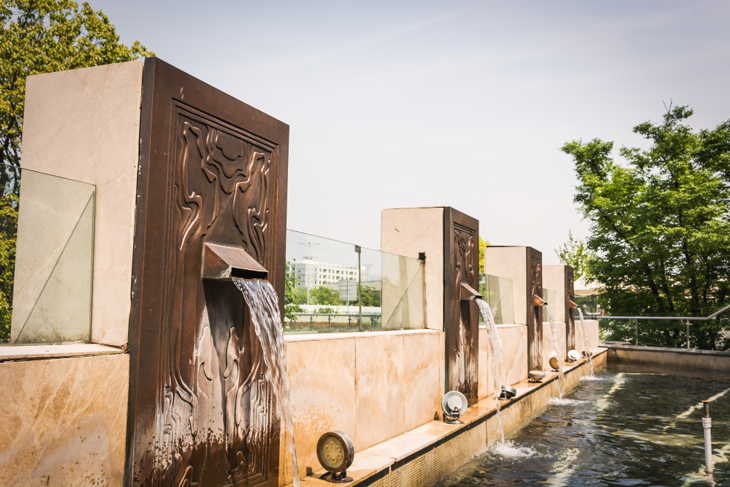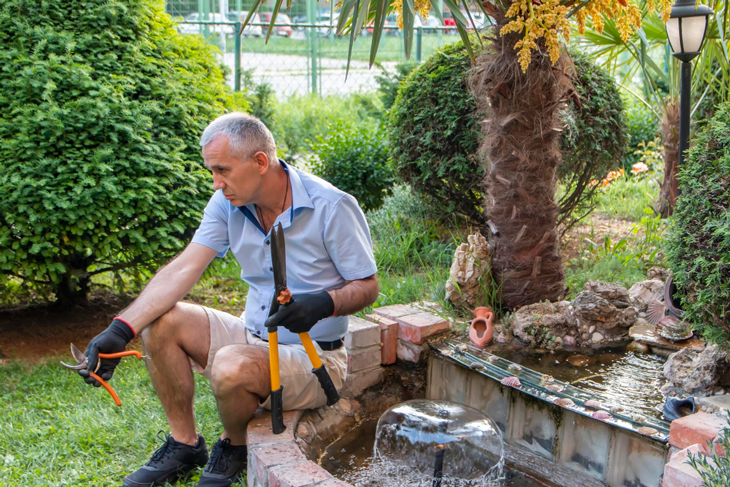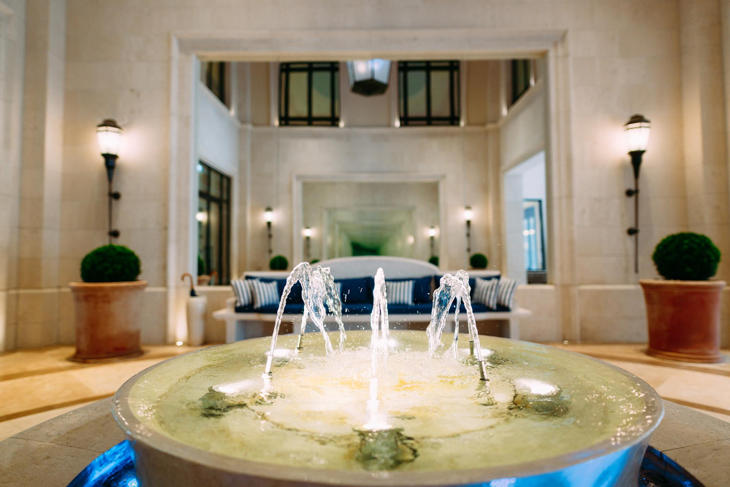Choosing the Perfect Fountain for Commercial Spaces: Impact, Impression, and ROI
In the competitive world of commercial real estate and business environments, distinctive design elements that create memorable impressions are invaluable. Water features—particularly custom fountains—have emerged as powerful investments that differentiate spaces, enhance brand perception, and create environments where people genuinely want to be. This guide explores how fountains serve multiple strategic functions in commercial settings while providing substantial returns on investment.
The Business Case for Water Features
Before addressing design specifics, it's worth understanding the tangible benefits fountains bring to commercial environments:
First Impression Enhancement: Psychological research confirms that environmental first impressions form within seconds and significantly influence overall perceptions of a business or property. A thoughtfully designed fountain creates an immediate sensory experience that communicates quality, attention to detail, and prosperity.
Dwell Time Increase: Retail developers have documented that properties with significant water features show measurably longer customer dwell times—often 15-20% increases over comparable properties without water elements. This extended presence directly correlates with higher per-visit spending in retail environments.
Acoustic Benefits: The consistent ambient sound of flowing water masks less pleasant mechanical noises (HVAC systems, elevator machinery, office equipment) while creating acoustic privacy in conversation areas—a benefit particularly valued in healthcare, hospitality, and professional settings.
Tenant Attraction and Retention: Commercial properties featuring distinctive water elements consistently command higher lease rates while experiencing lower vacancy rates. Corporate tenants increasingly recognize that environmentally pleasant spaces help attract and retain top talent in competitive markets.
Competitive Differentiation: In crowded market segments, memorable environmental features create lasting impressions that distinguish properties from competitors, even when other amenities and specifications are similar.
Industry-Specific Fountain Applications
Different commercial sectors benefit from water features in unique ways:
Corporate Headquarters: Executive-level fountain installations project stability and success while creating pleasant entry experiences for clients and visitors. Contemporary corporate installations often feature company branding subtly incorporated into the design through materials, shapes, or lighting elements.
Healthcare Environments: Research on biophilic design principles reveals that patients exposed to natural elements—including water features—report lower stress levels and often require less pain medication. Healing gardens with gentle water elements have become standard features in forward-thinking medical campuses.
Hospitality Settings: Hotels use fountains strategically to create memorable arrival experiences, mask urban noise in courtyard settings, and establish distinctive gathering spaces. The sound of water becomes part of the sensory branding that guests associate with quality experiences.
Retail Environments: From shopping centers to individual luxury retailers, flowing water creates an atmosphere of quality while providing natural gathering points. Fountains in central courts or near dining areas extend visitor stay duration and encourage social interaction.
Restaurant Spaces: Dining establishments use water features to create intimate acoustic environments where conversation remains private despite proximity to other tables. Outdoor dining terraces particularly benefit from water sounds that mask street noise.
Multi-Family Residential: Luxury apartment and condominium properties increasingly feature fountains in common areas as amenities that justify premium pricing while creating community gathering spaces.
Strategic Placement Considerations
Where a fountain is positioned dramatically impacts its effectiveness:
Entry Focus: Fountains positioned at main entrances create powerful first impressions while establishing the property's design language and quality level before visitors even enter the building.
Central Gathering Points: Atrium or courtyard installations create natural congregation spaces where informal interactions occur—particularly valuable in business environments where creative collaboration is essential.
Transition Markers: Fountains effectively delineate transitions between different functional areas within a property, signaling to visitors that they're entering a new zone with distinct purposes.
Architectural Complement: Water features can emphasize existing architectural statements or compensate for design limitations, drawing attention toward or away from specific structural elements.
Outdoor Connection: Even in entirely indoor settings, fountains create psychological connections to natural environments, satisfying the human biophilic need for nature within built spaces.
Design Approaches for Commercial Impact
Commercial fountain design requires balancing aesthetic impact with practical considerations:
Scale Appropriateness: Commercial fountains must be proportional to their surroundings—undersized features disappear in grand spaces, while oversized installations can overwhelm smaller environments. Professional designers conduct detailed spatial analysis to determine optimal proportions.
Branding Integration: Subtle incorporation of corporate colors, logo elements, or company values into fountain design creates branded environments without obvious or heavy-handed marketing.
Material Selection: Commercial installations demand more durable materials than residential fountains due to higher traffic and more intensive use. Options include:
- Architectural bronze for prestigious corporate installations
- Cast stone for classic, timeless applications
- Stainless steel for contemporary, low-maintenance solutions
- Granite and natural stone for durability with organic warmth
Lighting Consideration: Integrated lighting extends a fountain's impact into evening hours—crucial for properties with after-dark operations. Energy-efficient LED systems can change colors for seasonal or event-specific themes.
Sound Engineering: The acoustic properties of moving water deserve careful consideration in commercial settings. Fountain designers now use sophisticated modeling to predict and shape the sound profile, ensuring the feature enhances rather than dominates the acoustic environment.
Practical Implementation Factors
Beyond aesthetics, commercial fountain installations require attention to several practical factors:
Water Management Systems: Commercial fountains require more sophisticated water management than residential features, including:
- Auto-fill systems that maintain optimal water levels
- Advanced filtration to ensure crystal clarity despite higher exposure to debris
- Chemical treatment systems appropriate for public spaces
- Water quality monitoring to protect both the fountain and public health
Maintenance Requirements: Ease of maintenance significantly impacts long-term success. Design elements should allow straightforward access to pumps, filters, and electrical components without disrupting operations or requiring specialized equipment.
Energy Efficiency: Modern commercial fountains incorporate variable speed pumps, LED lighting, and control systems that optimize energy use while maintaining visual impact. These systems often integrate with building management systems for centralized monitoring.
Seasonal Adaptability: In seasonal climates, fountains should be designed for simple winterization or, ideally, year-round operation with appropriate freeze protection systems.
ADA Compliance: Public access fountains must address accessibility requirements, including perimeter detection for visitors with visual impairments and appropriate height considerations for interactive elements.
Financial Considerations and ROI
While quality commercial fountains represent significant investments, their returns justify the expenditure:
Initial Investment Ranges: Commercial water features generally range from $25,000 for modest installations to $1 million+ for signature pieces, with most mid-range corporate installations falling between $75,000-$250,000.
Operational Costs: Modern systems minimize ongoing expenses through efficient pumps, LED lighting, and automated maintenance systems. Typical annual operational costs range from 3-7% of the initial investment.
Value Appreciation: Unlike many building features that depreciate over time, well-maintained water features often increase in value as they develop character and patina, becoming significant property assets.
Marketing Value: Distinctive fountains frequently become marketing assets that appear in property brochures, corporate materials, and even location identifiers in wider community references—providing ongoing visibility beyond their physical presence.
ROI Metrics: Forward-thinking property managers now track specific ROI metrics for signature fountains, including:
- Lease rate premiums compared to comparable properties
- Reduced vacancy rates and tenant turnover
- Increased foot traffic in retail settings
- Higher per-visit spending in commercial environments
- Photography frequency by visitors (a key indicator of memorable impact)
Case Studies in Commercial Success
Examining successful implementations provides valuable insights:
Corporate Headquarters Example: A regional financial institution incorporated a two-story falling water wall in their headquarters lobby, using glass and stone that reflected their brand values of transparency and stability. Post-installation surveys showed 92% of clients mentioned the feature when describing their impression of the firm, and employee satisfaction scores increased 18% compared to their previous headquarters.
Healthcare Application: A suburban medical campus installed a series of courtyard fountains visible from treatment rooms, with sound carefully engineered to be audible within adjacent spaces. Patient satisfaction scores increased 23% compared to similar facilities without water features, and staff retention improved measurably.
Retail Success Story: A shopping center renovation that replaced dated planters with a central choreographed fountain experienced a 28% increase in average visitor dwell time and 17% higher per-visit spending following the installation, delivering complete ROI within 14 months despite the substantial initial investment.
When properly conceptualized, designed, and executed, commercial fountains transcend mere decoration to become strategic assets that enhance property value, strengthen brand perception, and create environments where people genuinely want to be—delivering returns that far exceed their initial and ongoing costs.
Contact The Fountain Factory's commercial division for a consultation on how custom water features can transform your business environment and deliver measurable returns on investment.
